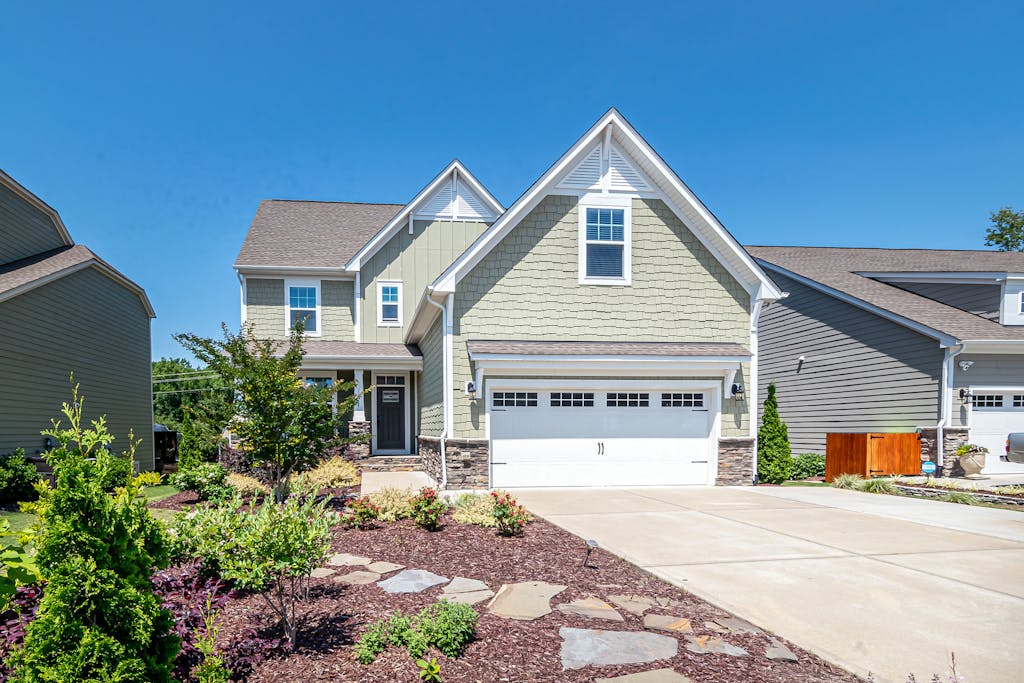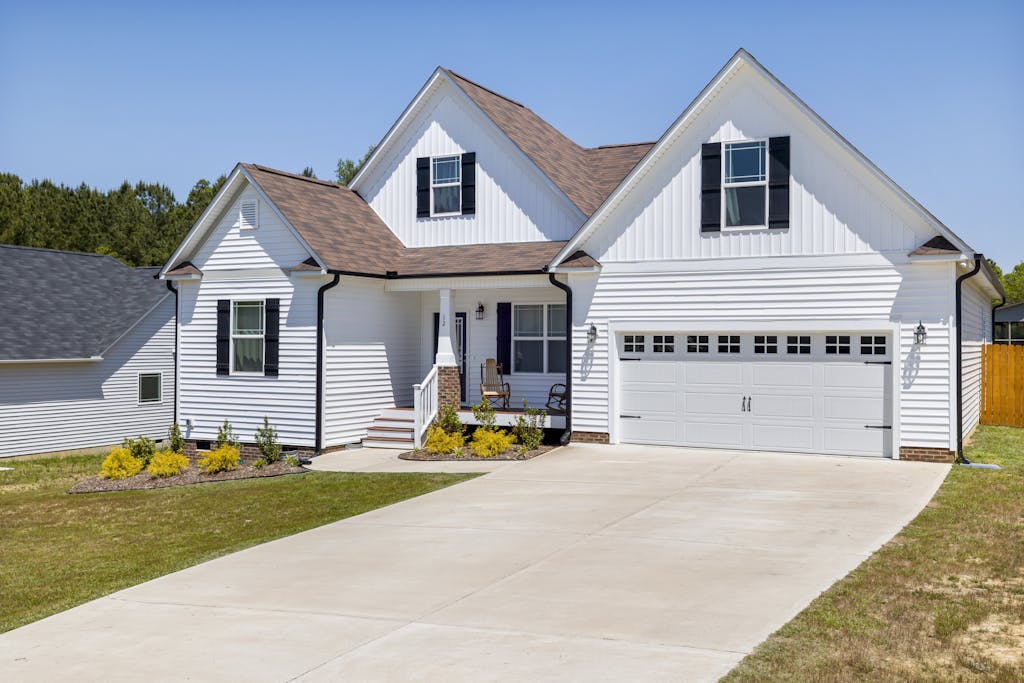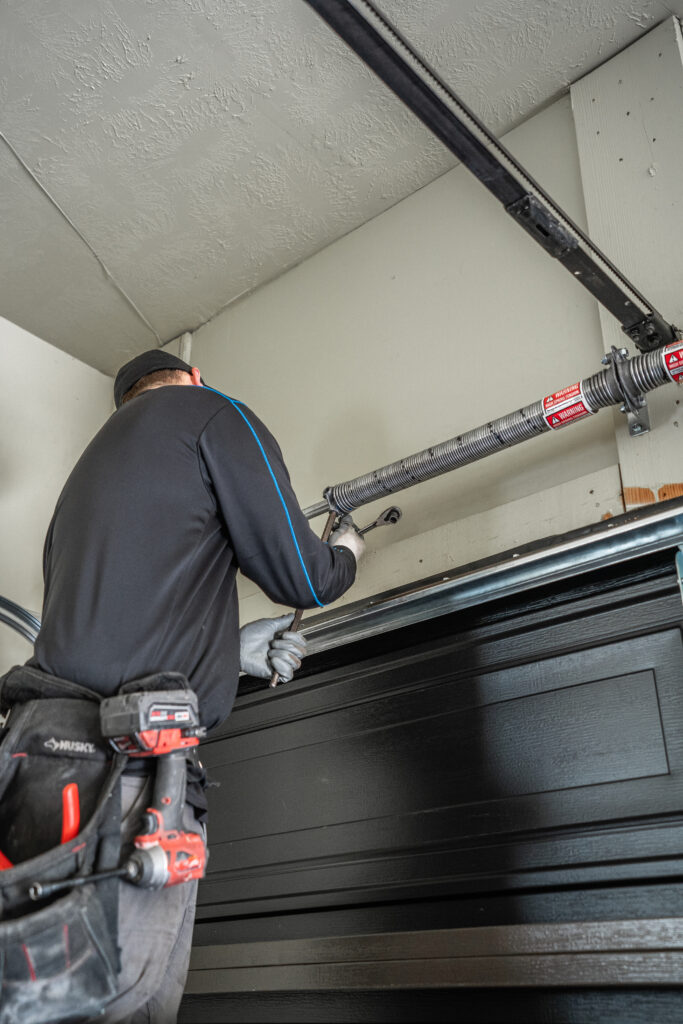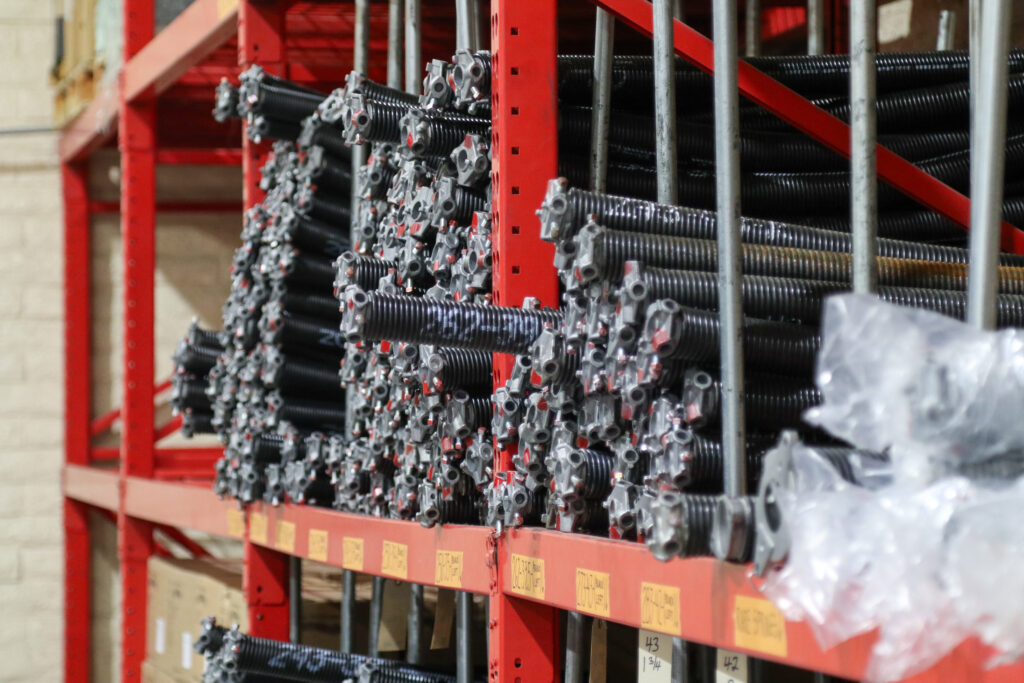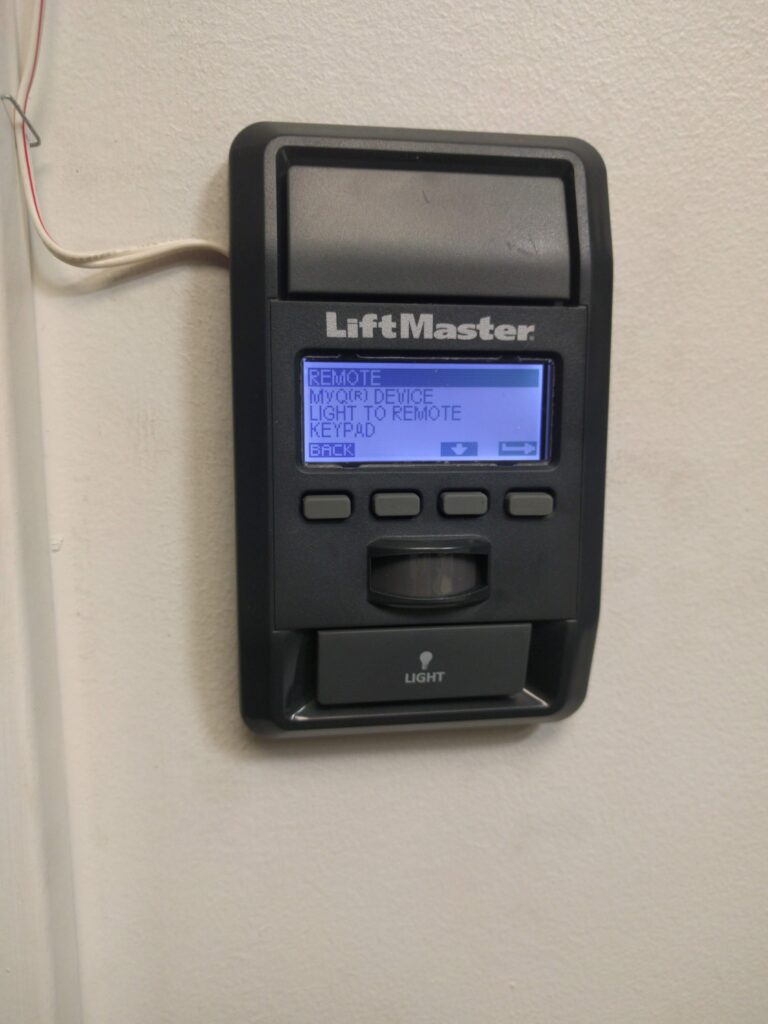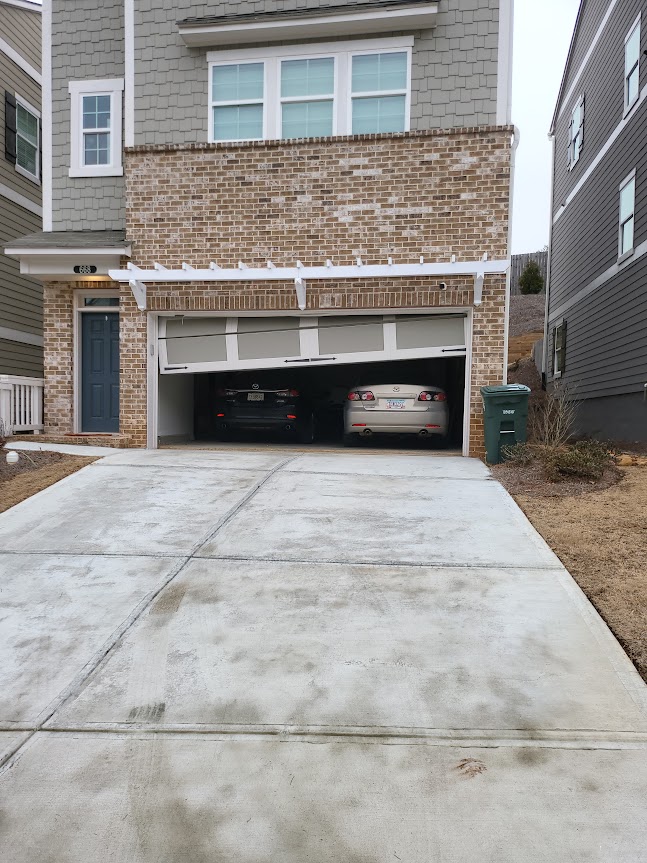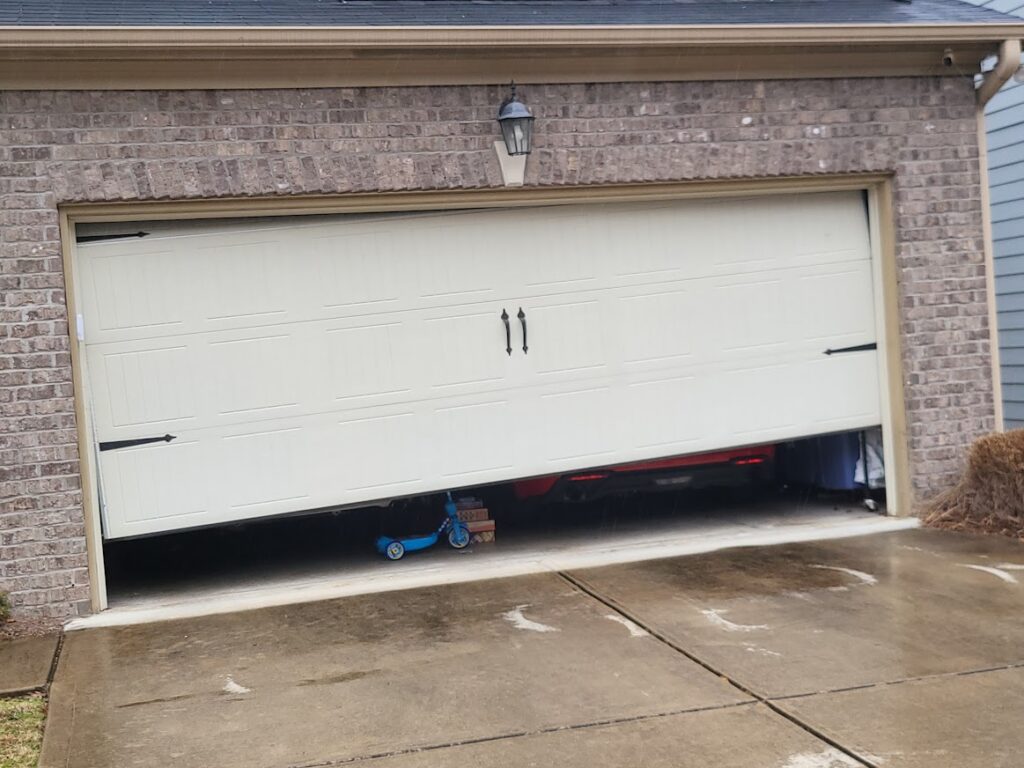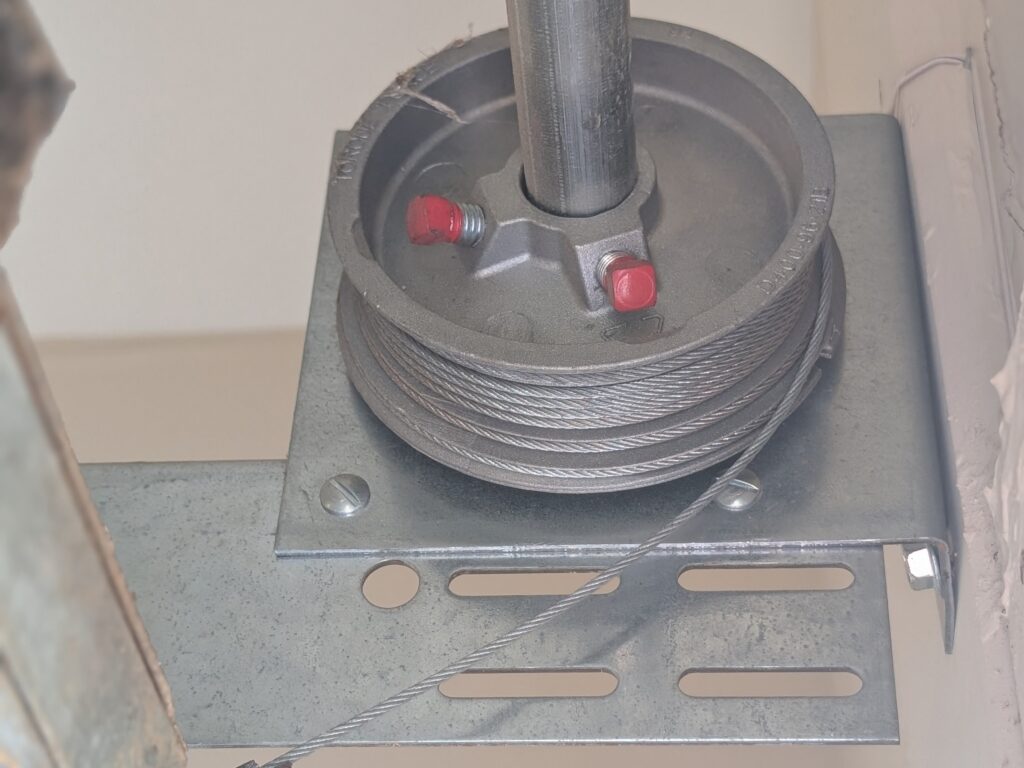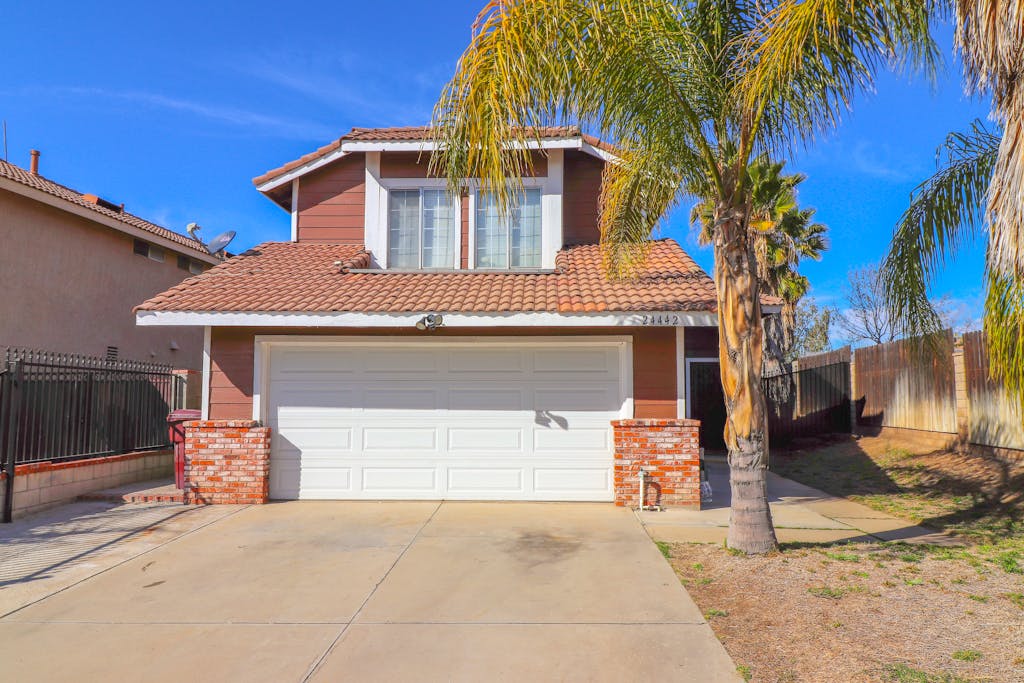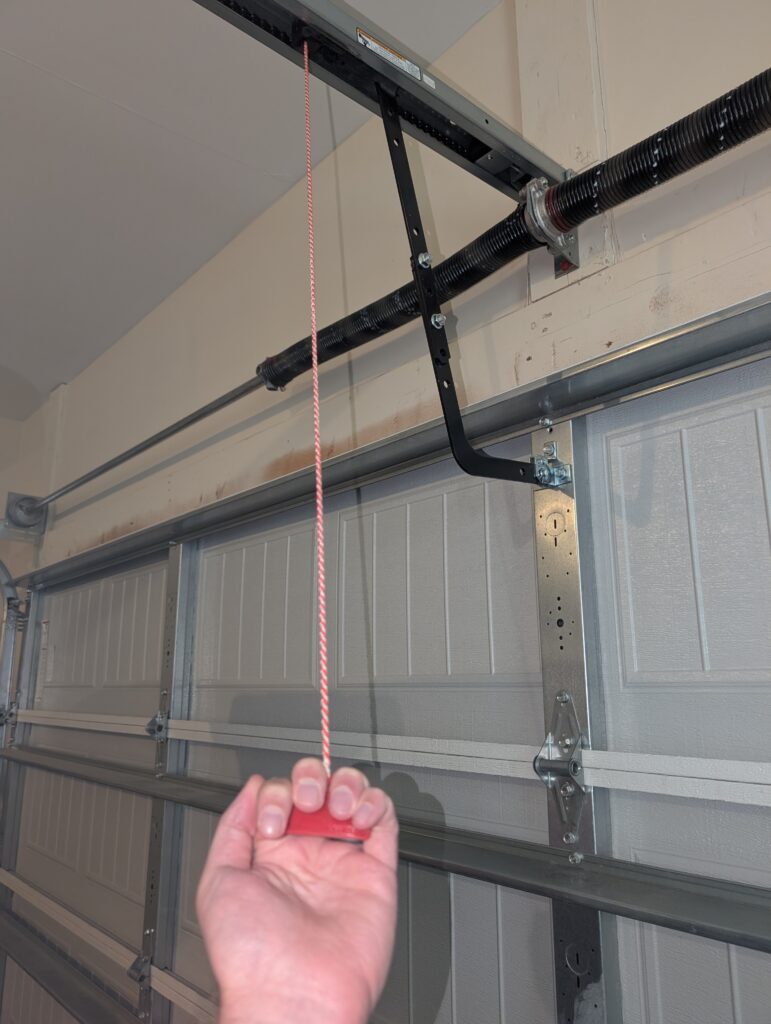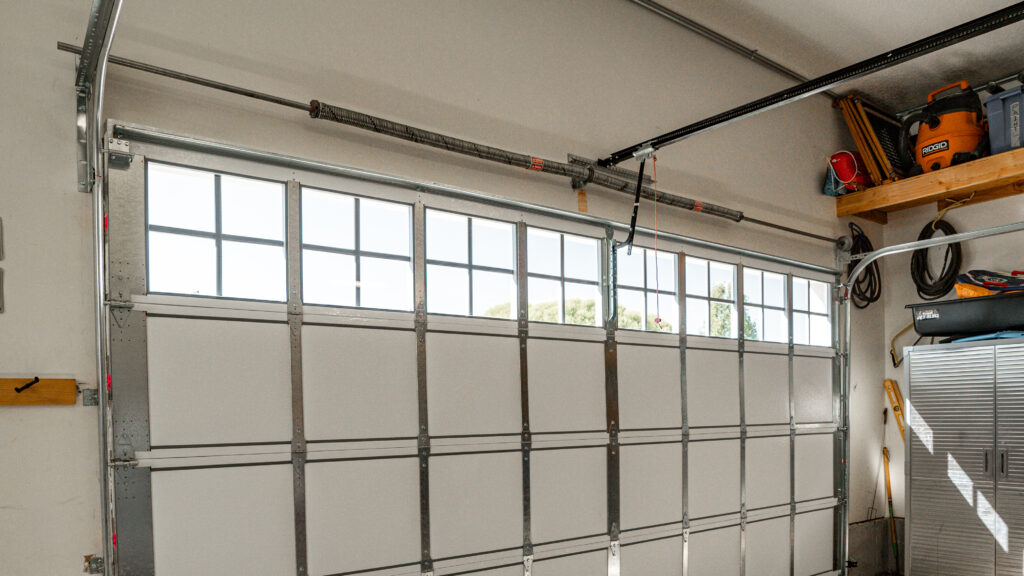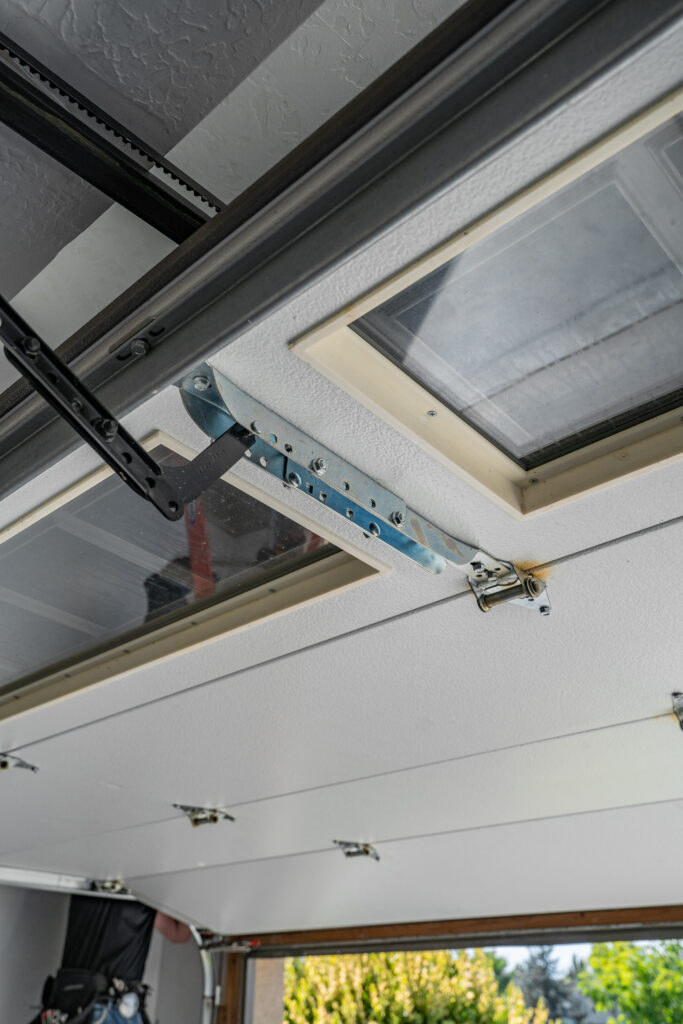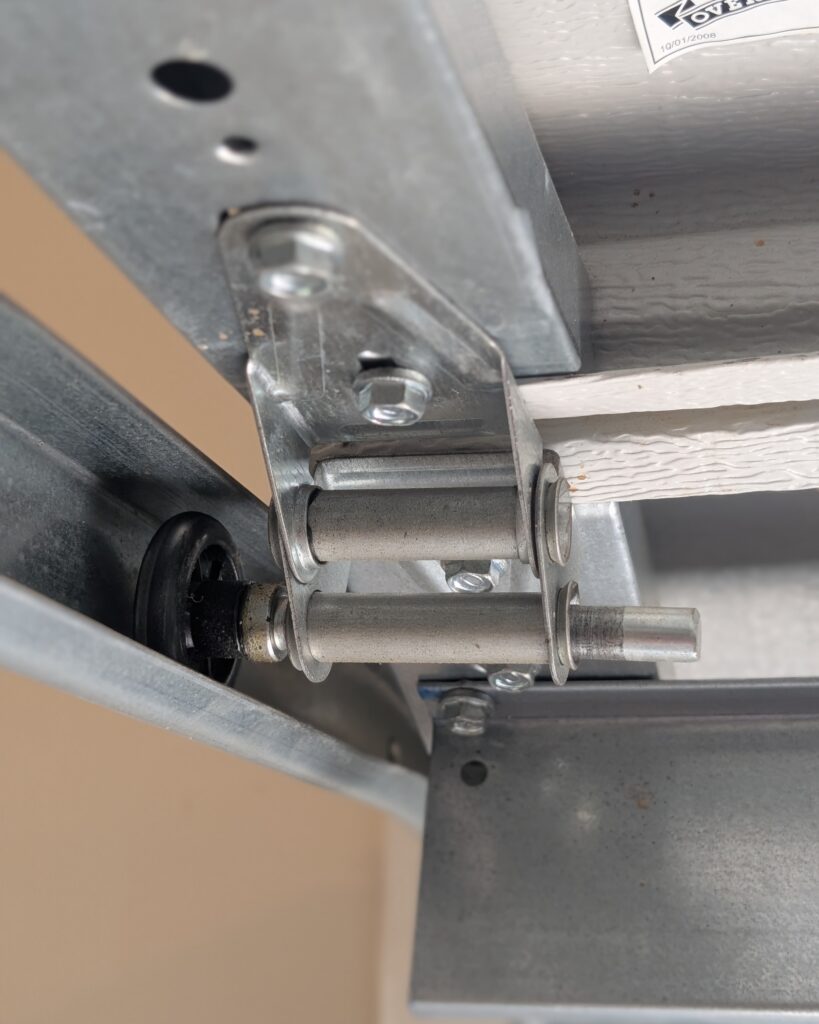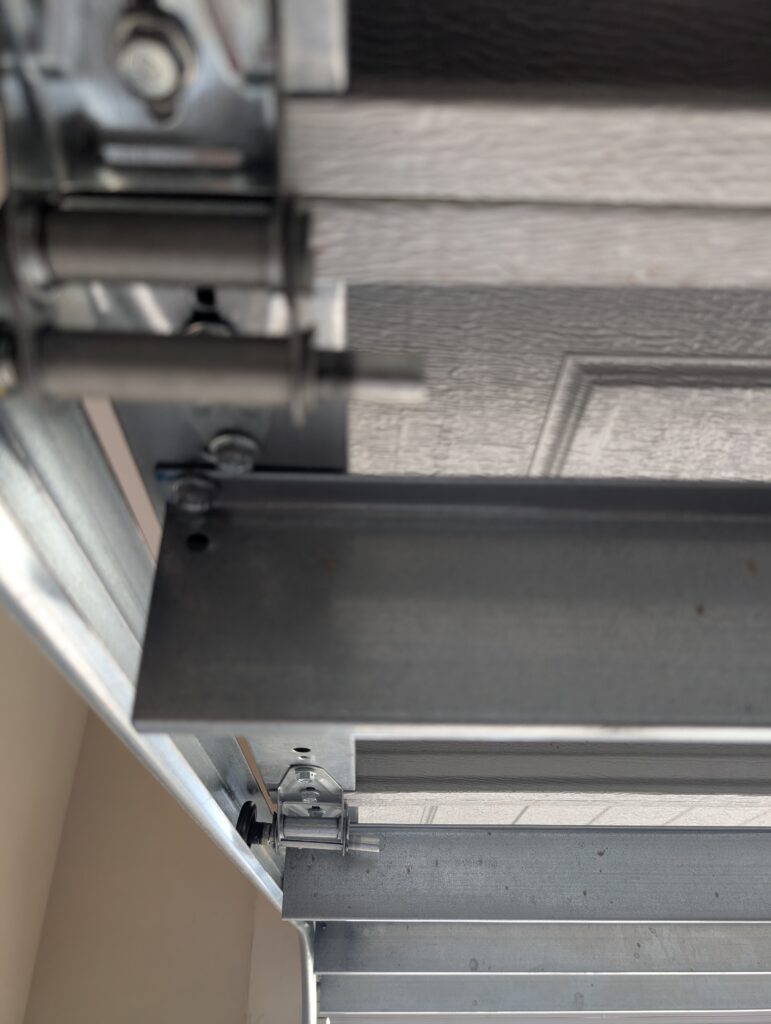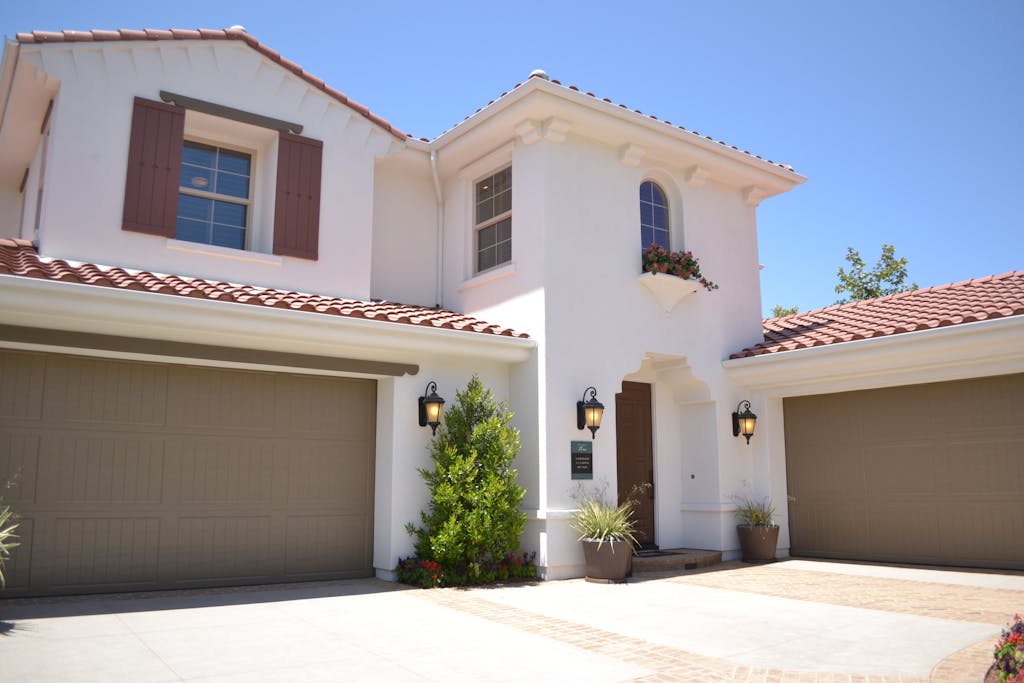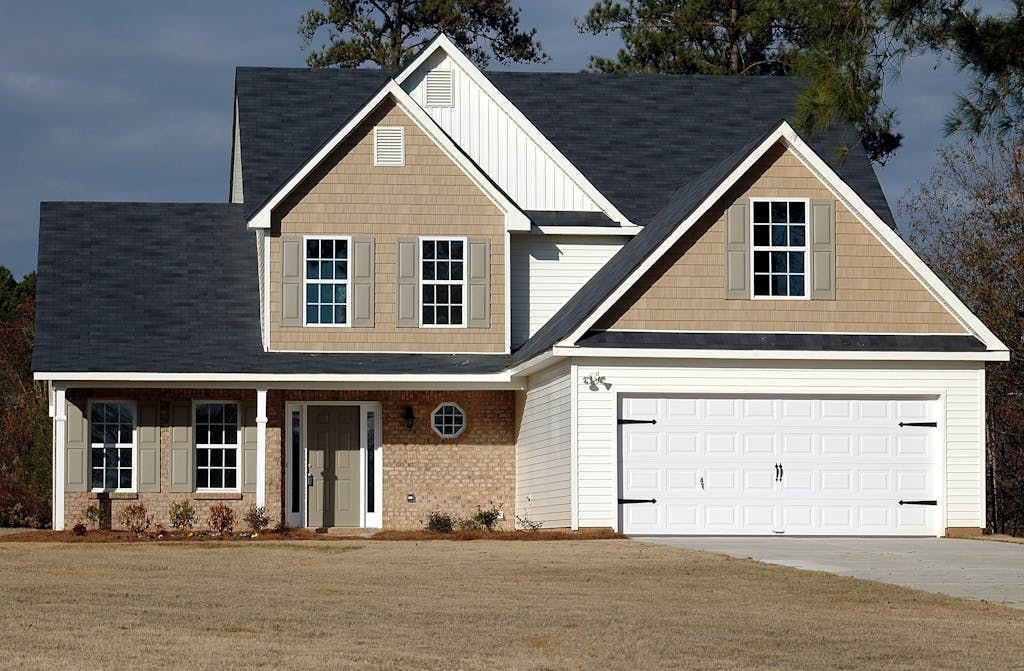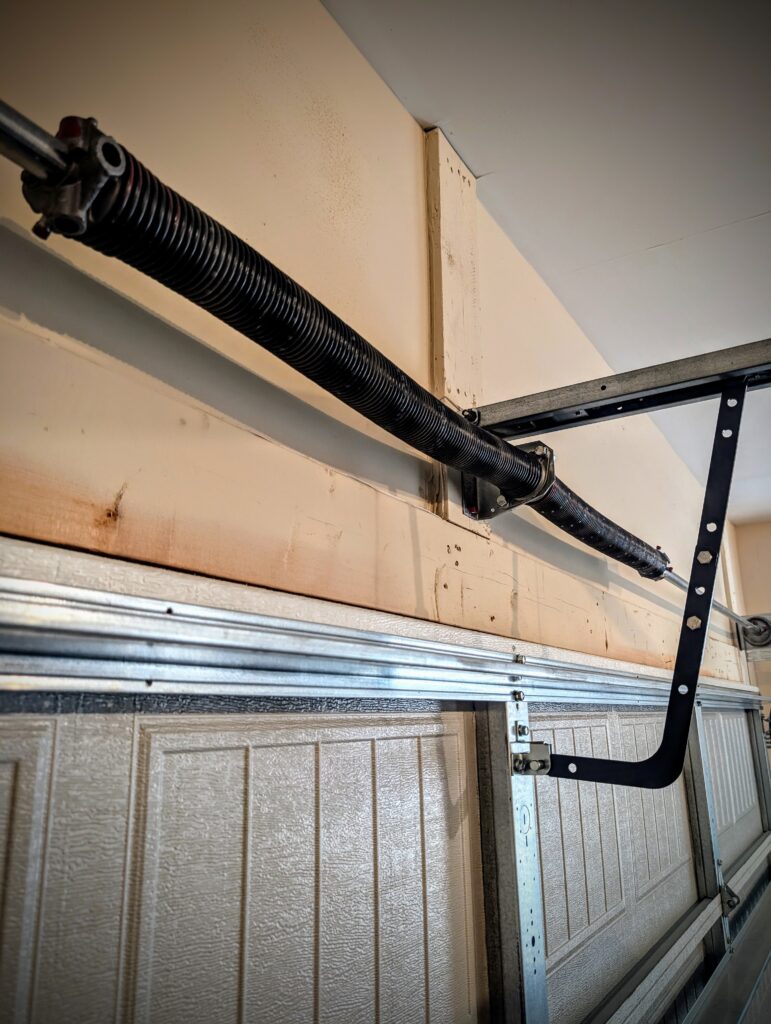Faux Wood Garage Doors: Wood-Look Style
Dreaming of a wood garage door but dreading the upkeep? Discover faux wood options that offer stunning, realistic wood looks with durability and minimal maintenance. This guide dives into materials, styles, cost comparisons, and everything you need to know to choose the perfect wood-look door for your home.
By: Jared Macarin | Published: May 8, 2025
Find Garage Door Repair Services
Get a fast & free quote | Schedule your service today
Do you like the look of a wood garage door, but are wary of the maintenance and the price? Say hello to a faux wood garage door, which is gaining popularity as an alternative for those in the market to replace their garage door.
Faux wood garage doors can be made from various materials, and they all come with benefits that could push homeowners to choose them over a real wood garage door. In this guide, we’ll break down the types of faux wood garage doors, their benefits and drawbacks and important things to consider.
If you are considering a faux wood garage door, call Garage.com 24 hours a day, seven days a week to be connected with top-rated companies that can fulfill your needs.
What Are Faux Wood Garage Doors? Understanding the Modern Alternative
Faux wood garage doors offer functionality, aesthetics and practicality. It is crucial to know there are different types of faux wood doors, and how they are constructed. Fiberglass, vinyl and composite faux wood garage doors all provide homeowners with that wood look without being the actual material.
Materials and Construction Methods
- Fiberglass: Synthetic material combined with epoxy or urethane resin, then tinted with wood-tone colorant that seeps throughout the material.
- Vinyl/Aluminum: These can be molded with a wood-like texture, but also need to be reinforced with a steel frame.
- Composite: These have some real wood in them and are mounted on steel frames for support.
The Technology Behind Realistic Wood Grain
Faux wood doors are textured with wood grains and colored with wood tones to give them a natural look. In many cases, it’s tough to decipher – even up close – that the wood is not authentic.
Benefits of Choosing a Wood-Look Garage Door Over Real Wood
A faux wood garage door has numerous benefits over a traditional wood door, chiefly among them being lower maintenance, lighter and more weather resistant.
Weather Resistance and Durability Advantages
Because it’s synthetic or metal, and not wood, the faux wood garage door is not susceptible to warping or rotting like real wood. That simply means the doors will maintain their functionality and their appearance over time despite any harsh weather conditions.
Maintenance Requirements and Long-Term Care
The maintenance requirements for the faux wood garage door system are like any other garage door. It is recommended that you get yearly garage door tune-ups to make sure all the components are working as they should. For the door itself, the faux wood door is made to last and if you keep it clean and undamaged, it should last a very long time.
Popular Faux Wood Garage Door Styles and Designs
Each company has their own styles of faux wood garage doors they offer. Most will be able to offer numerous options for look (carriage house or traditional panels), paint color and finishes. They also can be customizable with windows
If you are curious about what would look best with your home, call Garage.com to be connected with highly rated companies that have a portfolio of options to fit your needs and budget.
Insulation and Energy Efficiency Features
Because the garage door can be crudely thought of as a giant hole in your house when opened, you of course want the garage door to be energy efficient.
R-Value Ratings and Thermal Performance
An R-value is simply a measurement for thermal efficiency and how much a surface allows heat to pass through it, often found when discussing the insulation of your door. The higher R-value, the more energy efficient the garage door is. Each style of door, and the material it is composed of, dictates the R-value.
Energy-Saving Benefits for Climate-Controlled Garages
If your garage is climate controlled, the R-value of your garage door is especially important as you don’t want the door to impact your energy bill.
Faux wood doors have different R-values based on the materials used to make them, with some being comparable to a real wood door and others with a better R-value. You can also improve the R-value by adding DIY insulation.
Cost Considerations: Faux Wood vs. Real Wood Garage Doors
Faux wood doors are usually cheaper than their real wood counterparts, but depending on the design and other factors, the initial difference could be negligible.
The biggest cost considerations come into play down the line as the life of a faux wood door is superior to a real wood garage door. That is because of the materials used in building the door. Faux wood garage doors are built to withstand weather much better than a real wood door, so the cost savings in the long run can be game-changers.
So while any new garage door will increase your home’s value and bring you a return on your investment, the long-term cost savings of a faux wood garage door is where the two differ most.
Maintaining Your Faux Wood Garage Door
Faux wood garage doors were designed and built with low-maintenance in mind. Keeping them clean with soap and water will help ensure they look new and regular tune-ups yearly for the garage door itself can help identify any potential issues.
If there is any damage to the door itself, it is recommended to speak to your garage door installer to discuss your options and what may be under warranty.
Frequently Asked Questions About Faux Wood Garage Doors

Get Your Free Quote and Schedule Your Garage Repair Today
Find top-rated companies for fast garage repairs and service to make sure your garage door system lasts. Get free quotes from garage door companies in your area.
Tips and Expert Advice for Your Garage
Stay informed with expert advice on garage door maintenance, garage door service, garage door replacement, and upgrades. Explore our blog for guides, troubleshooting tips, and more.

